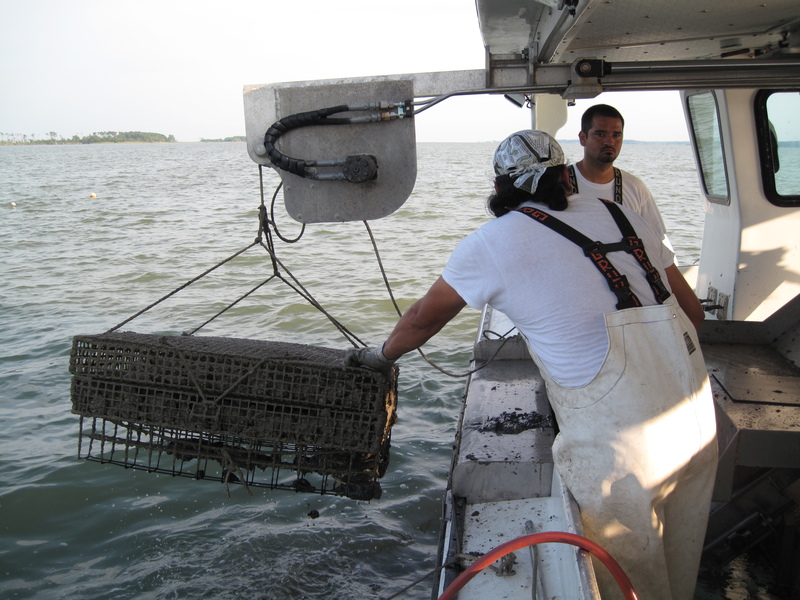One year after creating the Inland Bays Shellfish Aquaculture Tiger Team and naming E.J. Chalabala restoration coordinator for the Delaware Center for the Inland Bays to lead it, the CIB board of directors approved the final report from the team at their meeting March 22.
The Tiger Team was charged with exploring the opportunities and challenges in bringing shellfish aquaculture back to the Inland Bays. Delaware is the only state on the eastern seaboard without a shellfish aquaculture industry, one that could bring not only economic benefits to Delaware, but also ecological benefits to the beleaguered Inland Bays.
With annual revenue of $119 million on the east coast alone, the shellfish aquaculture industry is growing fast, fueled by demand for local seafood, and restaurant interest in serving and promoting locally-sourced food.
Presently, shellfish aquaculture is prohibited by law under the Delaware State Code, so the first step to clear the way for this new business on the Inland Bays would require changes to the code which must be ratified by the Delaware Legislature. Many stakeholders are hopeful that the legislation will be introduced in the current legislation session.
Eleven member agencies each held one voting seat on the Shellfish Aquaculture Tiger Team; the Department of Natural Resources and Environmental Control Fish and Wildlife; DNREC Watershed Stewardship; DNREC Wetlands and Subaqueous Lands; Delaware Department of Agriculture; University of Delaware Sea Grant; Sussex County Economic Development Office; recreational interests; commercial clamming and oyster industry interests; the Shellfish Advisory Council, and the CIB.
Three sub-committees were formed and prepared reports and recommendations for the Tiger Team. Information Gathering and Synthesis mapped potential lease sites and developed the Potential Shellfish Aquaculture Lease Areas Report; Policy Funding and Permitting prepared draft code that would assist the Legislature in crafting legislation and estimated the cost of administering shellfish aquaculture production on the Inland Bays. The Education and Outreach Sub-committee identified and reached out to additional stakeholder groups locally and statewide who had an economic or environmental interest in the initiative.
The draft code will be delivered to legislative sponsors shortly by representatives of the CIB, DNREC, and DDA.
Before closing the meeting, CIB Board Chair Rick Eakle, announced the formation of the Inland Bays Shoreline Initiative Subcommittee to be led by CIB Science Coordinator Bart Wilson. His first action will be to report back to the board with a roster of organizations and individuals willing to serve on this new initiative.
The Inland Bays Shoreline Initiative Subcommittee is being convened to oversee the implementation of Action H of the Managing Living Resources and Their Habitats focus area of the CIB’s Comprehensive Conservation Management Plan. Action H directs the CIB to Develop a living shoreline initiative to maximize the amount of natural Bay shorelines.
Currently, most Bay shoreline stabilization is done by hardening shorelines with rip rap, which reduces the habitat value of shorelines and near-shore areas. Living shorelines are a proven technique to protect bay shorelines from erosion while protecting their habitat and water filtration functions.
The Center for the Inland Bays is a non-profit 501c3 charitable organization established in 1994 to promote the wise use and enhancement of the Inland Bays and its watershed. For more information go to www.inlandbays.org.





















































